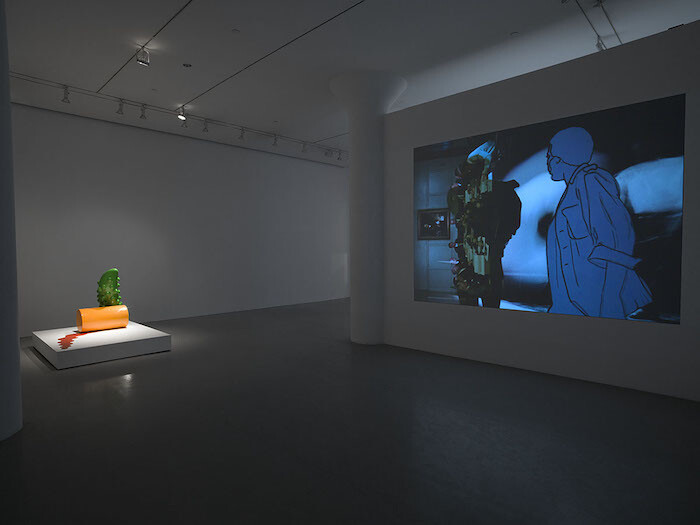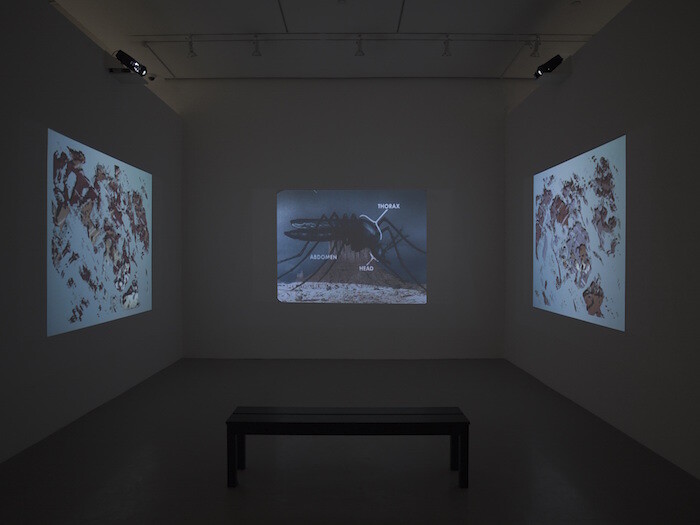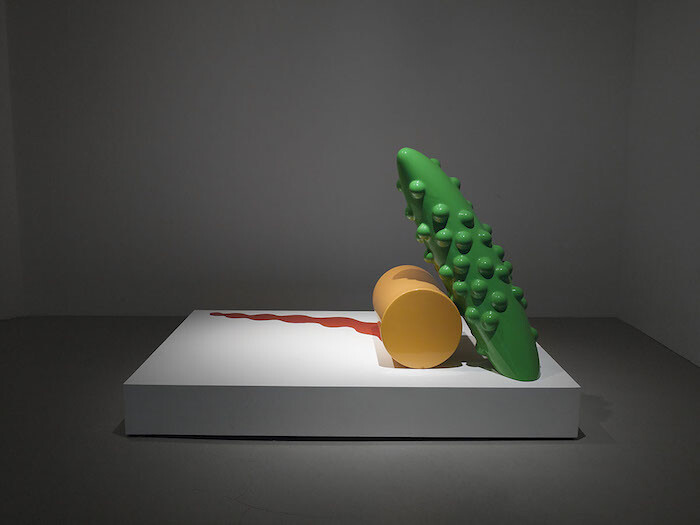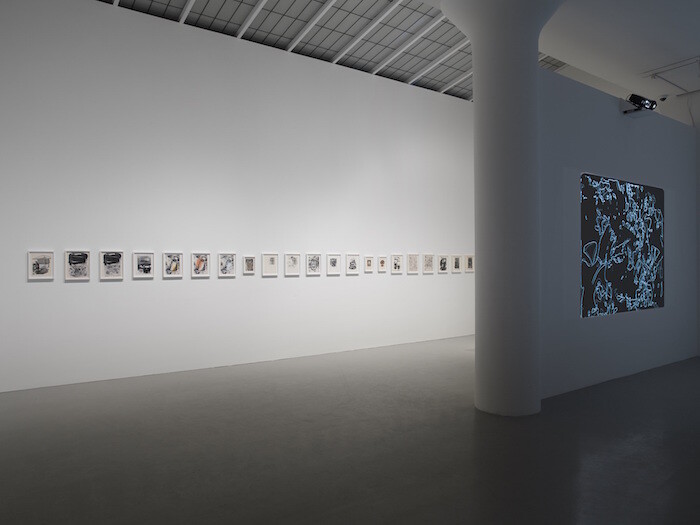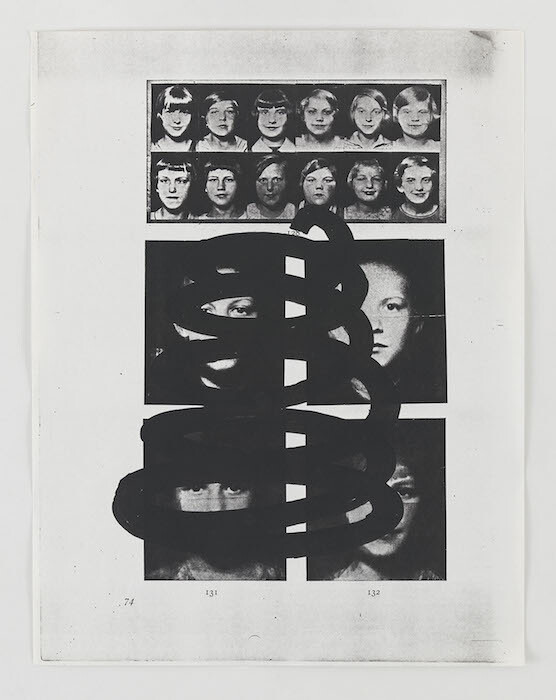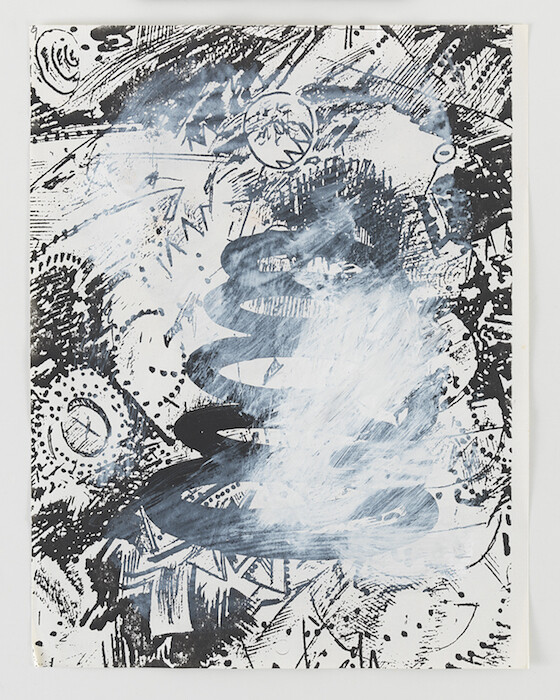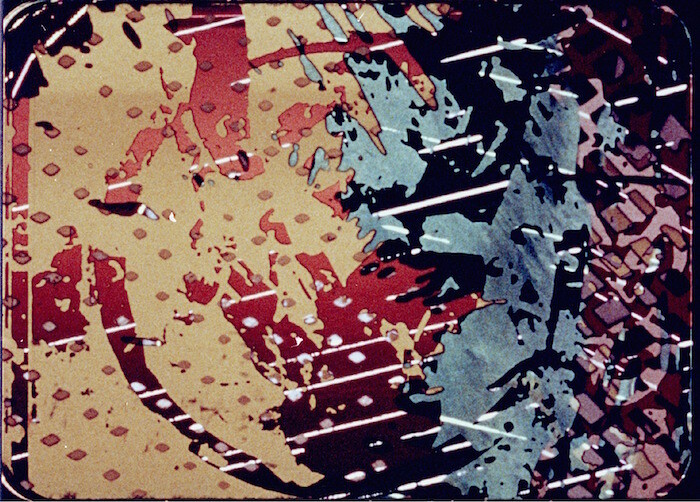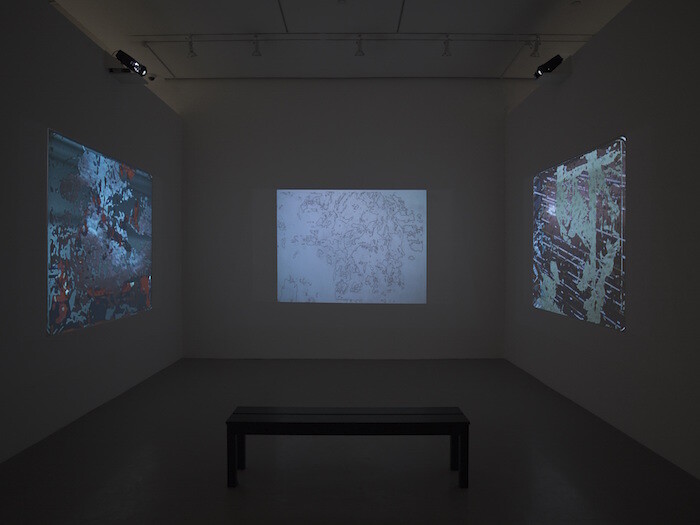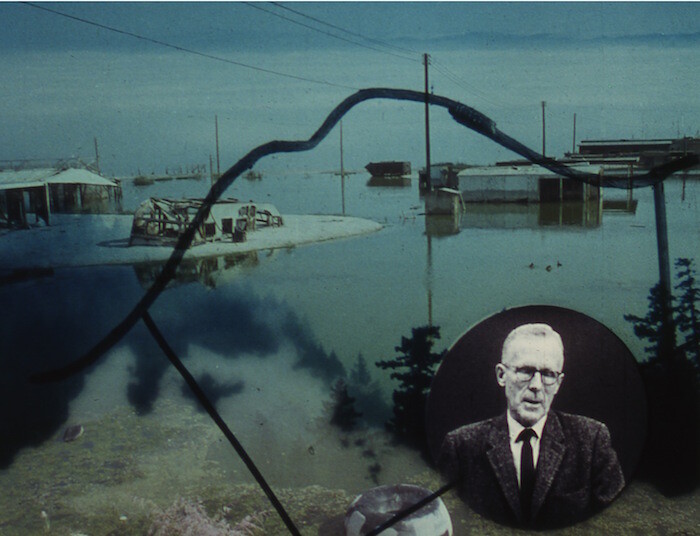Los Angeles-based artist Pat O’Neill has been making work for the last 50 years, and yet it’s rarely seen in New York. A key figure in West Coast experimental cinema, O’Neill is probably best known for highly plastic and technically accomplished films like his lysergic 7362 (1967) or his extraordinary 35mm feature Water and Power (1989), an experimental documentary concerning, among many things, the development of the Los Angeles Basin from prehistory to the present. But since the start of his career O’Neill has also been involved in an astonishing range of media—photography, sculpture, collage, and installation, in both commercial and independent spheres. Now in his late seventies, O’Neill is the subject of his first New York solo exhibition, which offers a concise but judicious sampling of his varied output.
Comprising twenty-two works on paper, five sculptures, and three moving-image works, “Let’s Make a Sandwich” exhibits both O’Neill’s playful sense of humor and his fascination with diverse materials, images, textures, and technical processes. The visitor most familiar with O’Neill’s film work will recognize his sensibility in the other media immediately, as in the exhibition’s first object: the 2001 sculpture Forney Chair, a red wooden chair with a yellow lacquered cow horn affixed to its seat. Simple as it may be, the piece concisely summarizes all of the hallmarks of O’Neill’s work: bright color, shocking juxtaposition of elements, precise craftsmanship, and a curious tension between found and fabricated materials (other sculptures make use of fur, metal, plastic, and wood). A little further into the exhibition’s somewhat labyrinthine space is Safer than Springtime (1964), a fiberglass, aluminum, and steel sculpture composed of three items: a comically large and phallic green pickle leaning against a yellow-gold cylinder with what looks like a trickle of red liquid seeping from its underside.
O’Neill’s collages suggest how his approach contrasts with that of someone like Bruce Conner, a roughly contemporary LA-based artist who worked extensively with both film and sculpture. While Conner’s collage works make use of woodcuts and other imagery to sustain seamless illusionistic dreamscapes, O’Neill’s are messy, making visible their various processes of xerography, Scotch-taping, and erasure. The result—as in a handful of works on paper that bear the title The Deadly Spiral (1978)—resists a sense of uncanny immersion, favoring an awkward harmony that reveals the push-and-pull between O’Neill’s handmade and machinic processes.
This obsession with the tensions generated by materials and methods has long made his moving-image pieces difficult to read, even as his extraordinarily detailed work with the cinematic apparatus impresses. (It has also enabled him to work occasionally in the commercial film industry, providing optical effects for feature films as diverse as Sweet Sweetback’s Baadasssss Song and The Empire Strikes Back.) In the exhibition’s title work, the silent three-screen projection Let’s Make a Sandwich (1978-2015), O’Neill constantly layers and montages images and textures in surprising, hallucinogenic, and humorous ways. The “sandwich” of the title seems to pun on the many strata of diverse images O’Neill assembles here: images of concrete being poured, step-printed nature footage, and great swathes of abstraction. Splashes of blue and red obscure images of water and black-and-white instructional films in ways that are palimpsestic, often reminiscent of the add-and-subtract strategies of Lettrist décollage.
The 18-minute loop Trouble in the Image (1996), a compilation of shorter films O’Neill made between 1978 and 1995, is a similarly vertiginous catalog of audiovisual materials and associations: observational footage, scratched prints of B-movies, composited landscapes, superimposed bodies, time-lapse photography, and line animation. Accompanied by an equally diverse and disorienting soundtrack provided by George Lockwood, the work is an exhilarating showcase for the artist’s visual ideas and technical mastery that suggests his particular approach to images: as physical materials to be shaped and recombined through re-photographic means. Through his irrepressible exploration of imaging processes and materials placed in volatile relation, O’Neill constantly troubles the image—and our perception of it—enacting strange encounters with their own elements of risk, but also humor and rich, sensual beauty.
